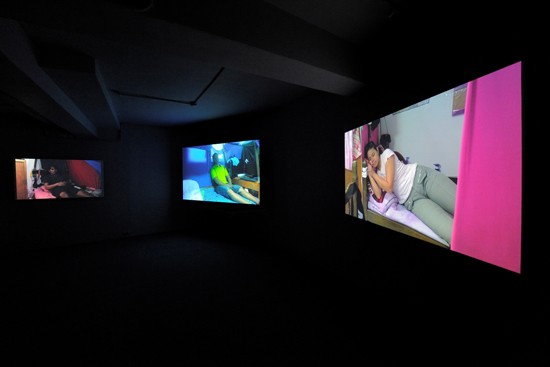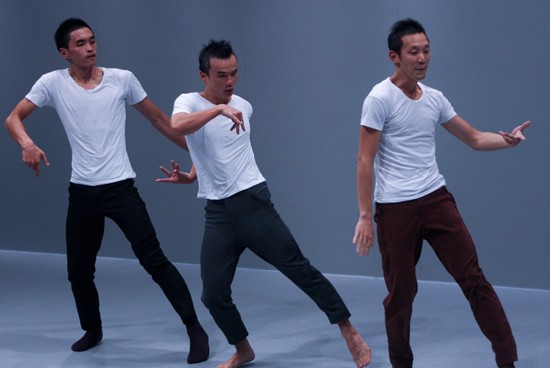 Jao Chia-en – REM Sleep (2011), installation view. All images: Courtesy Taishin Bank Foundation for Arts and Culture.
Jao Chia-en – REM Sleep (2011), installation view. All images: Courtesy Taishin Bank Foundation for Arts and Culture.
One of the Asia-Pacific region’s most prestigious privately sponsored awards for arts and culture, the Taishin Arts Award has been an annual mainstay of the Taiwanese contemporary art scene since it was founded in 2002. The winners of this year’s landmark 10th Taishin Arts Award were announced in a ceremony held May 12 at the Taishin Tower in Taipei. The Annual Performing Arts Award was presented to the dance production On the Road by Cheng Tsung-lung, held at the National Chiang Kai-shek Cultural Center in Taipei. The Annual Visual Arts Award was presented to the three-channel video installation REM Sleep by Jao Chia-en. The Jury’s Special Award was presented to the exhibition “[People’s Republic of China] – Republic without People,” curated by Wu Dar-kuen.
Established by the Taishin Bank Foundation for Arts and Culture, the Award confers prizes of NT $1 million for the performing and visual arts categories, respectively, with an additional NT $300,000 for the Jury’s Special Award. Any performing art productions or visual arts exhibitions that premiere in Taiwan during the relevant calendar year are eligible for nomination, with a stringent review by critics, curators and other professionals determining the recipients. Previous winners include the video artist Tsui Kuang-yu and the Cloud Gate dance company.
This year’s winners all had their premieres during the 2011 calendar year. Running about an hour long, Jao Chia-en’s REM Sleep uses documentary video to investigate the lives and dreams of immigrant laborers from Indonesia, the Philippines, Thailand and Vietnam who have come to Taiwan seeking livelihoods. Split across three screens of different sizes, the film sensitively touches upon the nightmare reality of those living at the bottom of Taiwanese society. As cited by the jury, “Jao takes the verbal and non-verbal images intricate to life and presents precisely the language gap between labor and leisure, routine and exception, living scenes and bio-politics with the poetic interlace of image movements and screen projections.”
 Cheng Tsung-lung – On the Road at National Chiang Kai-shek Cultural Center, ROC.
Cheng Tsung-lung – On the Road at National Chiang Kai-shek Cultural Center, ROC.
Loosely inspired by Jack Kerouac’s 1957 novel of the same name, Cheng Tsung-lung’s On the Road featured three dancers performing against a spare backdrop. The choreography combines movements evocative of traditional Chinese practices like taijiquan with more expressively interpretive elements. Organized for the Kaoshiung Museum of Fine Arts on the occasion of the centennial of the Republic of China, curator Wu Dar-kuen’s exhibition “[People’s Republic of China]” asked artists to imagine how the Republic might look another 100 years into the future.
The jury members for the Visual Arts category were Chiang Po-shin of Tainan National University of the Arts; Lai Hsiang-ling of the private Rockbund Art Museum in Shanghai; Ulrike Groos of the Kunstmuseum Stuttgart; and Zsolt Petrányi of the Hungarian National Gallery. The five-member jury for the Performing Arts category included the writer, playwright and director Jade Y Chen, Yoko Shioya of the Japan Society and Martin Wechsler of the Joyce Theater.
Commenting on 10 years of the Taishin Arts Award, Thomas Wu, the chairman of Taishin Financial Holdings and founder of the Taishin Bank Foundation for Arts and Culture, stated, “Over the past decade, the Taishin Arts Award has profoundly witnessed the vitality and potential of Taiwanese artistic ingenuity, and therein lies the values that have been established by arts prizes. Taishin Corporation has served in the background as a support system, one that maintains utmost respect for specialized processes, and at the same time, we are enormously proud of all the results.”
